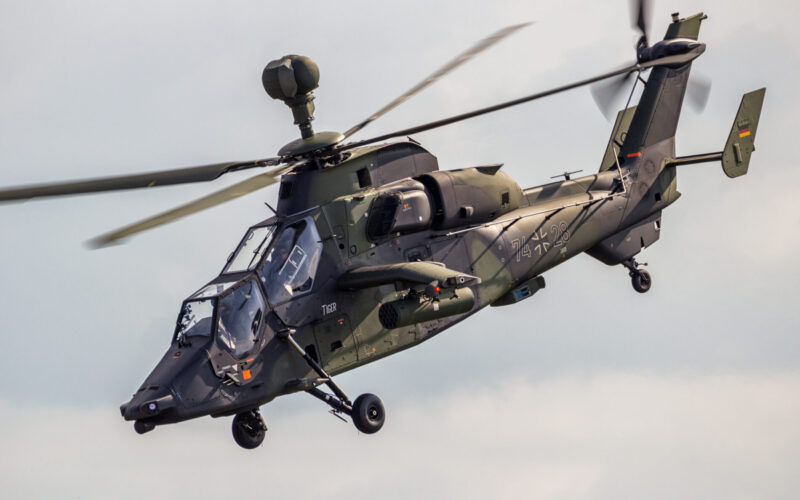Designed in the early 1980s amid the Cold War, the Franco-German Tiger combat helicopter was adopted by the two countries’ respective armies in 2009. Initially thought of as an anti-tank platform that could counter a Soviet invasion, it was eventually transformed into a multirole attack helicopter, with several variants being developed to fit the needs of its operators.
In May 2018, France and Germany formalized the modernization of the Tiger, defined by the French Minister of Armed Forces as a “new stage for Europe of defense and the consolidation of our industry.” On behalf of France, Germany, and Spain, the European Organisation for Joint Armament Cooperation (OCCAR) contracted the manufacturers involved in the project, namely Airbus Helicopters, Thales and MBDA, to carry out risk reduction tasks.
The modernization is due to bring the helicopters to the Mk3, focused on collaborative combat. For example, it should include the Manned Unmanned Teaming (MUM-T) which allows for a helicopter to control a drone. The Tigers of the French armed forces would also be able to share information with the newly-induced frontline fighting vehicles of the Scorpion program.
However, it now appears that the German side is hesitant to see the planned update move forward. After the Franco-German Council on defense and security held on February 5, 2021, German Chancellor Angela Merkel said that “for the standard Tiger 3, there is a whole series of negotiations to be conducted, in particular with Airbus for the German part.”
Unlike the FCAS fighter jet program, whose bumpy ride can mostly be blamed on political quibble, the reluctance over the €5.5 billion modernization comes from the military itself. In particular, the German Army points at the low operational readiness of the Airbus Tiger, according to Reuters.
In its 2018 ‘Report on the material situation of the main armament systems of the Bundeswehr’,’ the Defense Ministry revealed that on average only 11.6 out of its 53 Tiger helicopters were operational. In January 2020, the German media Bild said that number dropped to 8.
The Bundeswehr is not the only force critical of the aircraft. In July 2019, the Capability Acquisition and Sustainment Group (CASG) of the Australian defense ministry launched a request for information (RFI) to find a replacement to its Tiger, after several Australian institutions criticized the aircraft for its low availability and high maintenance cost. The RFI asked for the new aircraft to be “proven and mature, off-the-shelf”. In January 2021, Australia’s Defense Minister Linda Reynolds announced the acquisition of 29 Boeing Apaches from 2025, at a cost of $3.5 billion, to replace the 22 Tigers
Germany could now follow the example of Australia. The French defense think-tank Mars reported in La Tribune that Berlin could officialize its withdrawal from the Tiger program by Autumn 2021. Even worse for the European defense industry, an American solution might be preferred. “The decision would seem to have already been taken to order Apache AH-64 helicopters from Boeing through an FMS [Foreign Military Sales – ed. note] procedure,” reported Mars.
Though the decision was not confirmed by any of the interested parties, it is not the first time that Germany’s interest in the Apache is mentioned. In March 2020, Shepherd Media reported that “the German federal government has asked its US counterpart for information about the Boeing AH-64 Apache attack helicopter.”

